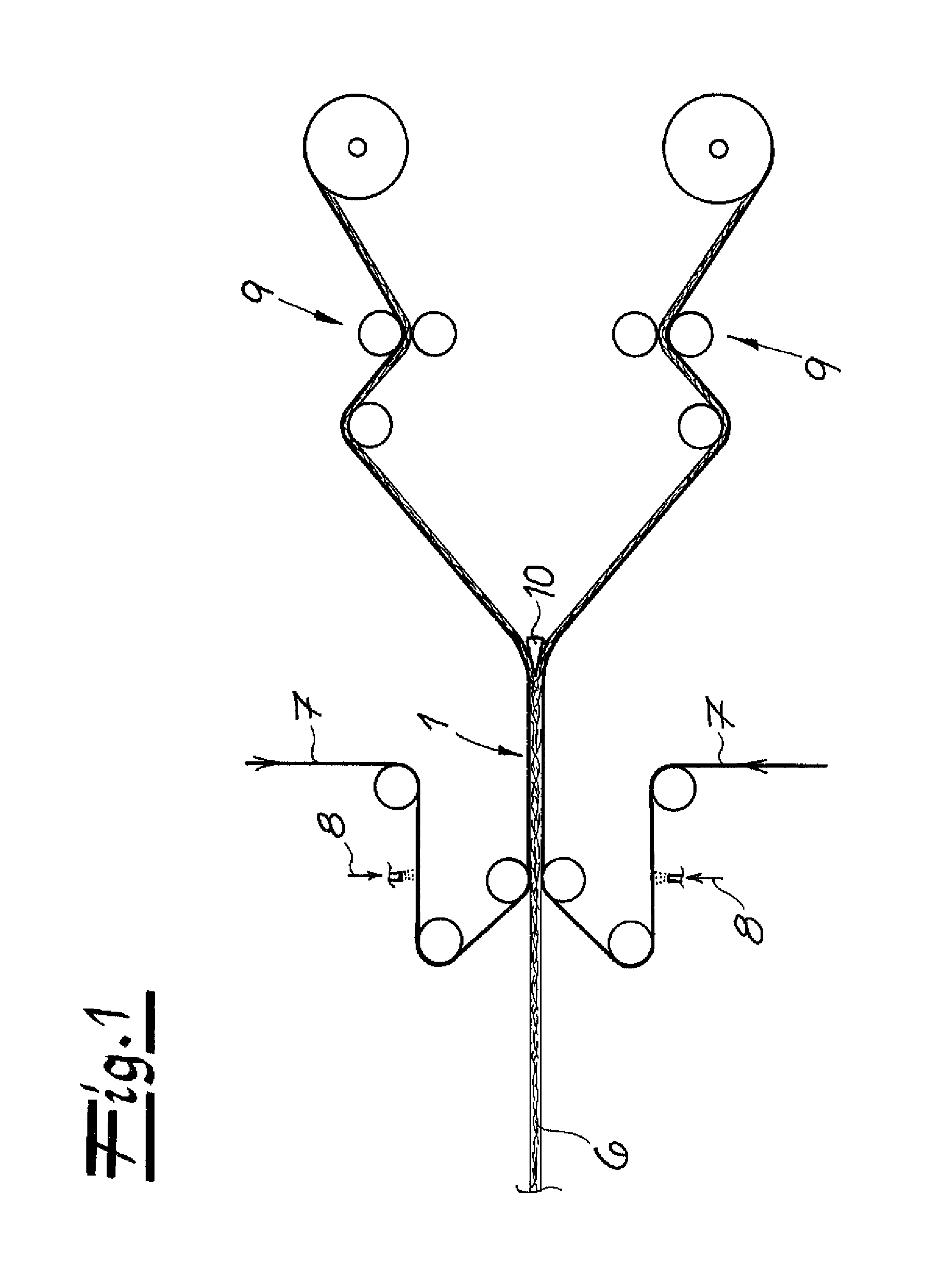Method for the production of an elastic composite material with a textile surface
a textile surface and composite material technology, applied in the direction of layered products, chemistry apparatus and processes, other domestic articles, etc., can solve the problems of unsatisfactory bond strength between the fibers of the textile layer and the elastic film, and unintentional loosening of fibers from the composite material, etc., to achieve a great stretching capacity
- Summary
- Abstract
- Description
- Claims
- Application Information
AI Technical Summary
Benefits of technology
Problems solved by technology
Method used
Image
Examples
Embodiment Construction
[0024]Referring now in detail to the drawings, the method shown in FIG. 1 serves for the production of an elastic composite material with a textile surface, which can be used, for example, as a soft-touch film or as an elastic element on baby diapers, incontinence articles, and the like. In the method, in a first step, a laminate 1 is produced as a pre-product; this laminate has elastic cover layers 2, 2′ and a core 3 composed of a nonwoven fabric. FIG. 2 shows the layer structure of the pre-product. Subsequently, laminate 1 is separated into two strips 4, 4′ by tearing open core 3; these strips each have a cover layer 2, 2′ and an adhering layer composed of nonwoven fabric 5. Strips 4, 4′ each form a method product that can be used as an elastic composite material, without any subsequent mechanical activation.
[0025]Core 3 consists of a melt-blown nonwoven or has a multi-layer structure with outer layers composed of a spun-bonded nonwoven fabric and a center nonwoven layer composed ...
PUM
| Property | Measurement | Unit |
|---|---|---|
| thickness | aaaaa | aaaaa |
| thickness | aaaaa | aaaaa |
| elastic | aaaaa | aaaaa |
Abstract
Description
Claims
Application Information
 Login to View More
Login to View More - R&D
- Intellectual Property
- Life Sciences
- Materials
- Tech Scout
- Unparalleled Data Quality
- Higher Quality Content
- 60% Fewer Hallucinations
Browse by: Latest US Patents, China's latest patents, Technical Efficacy Thesaurus, Application Domain, Technology Topic, Popular Technical Reports.
© 2025 PatSnap. All rights reserved.Legal|Privacy policy|Modern Slavery Act Transparency Statement|Sitemap|About US| Contact US: help@patsnap.com



